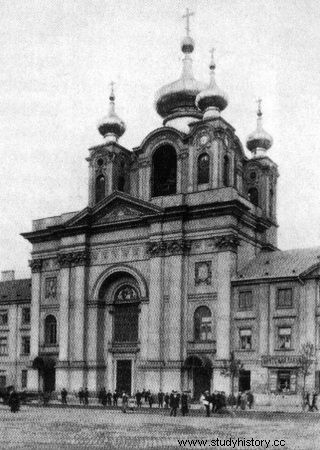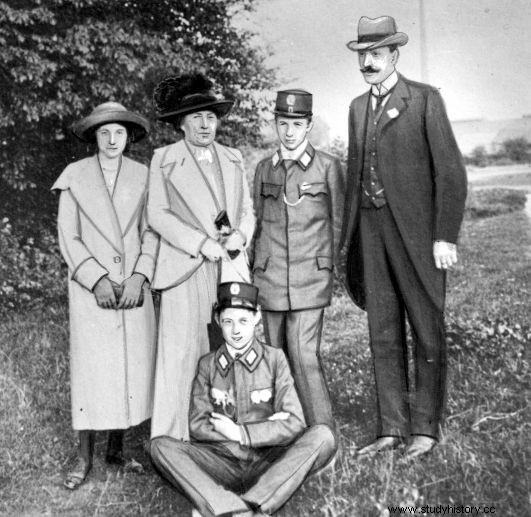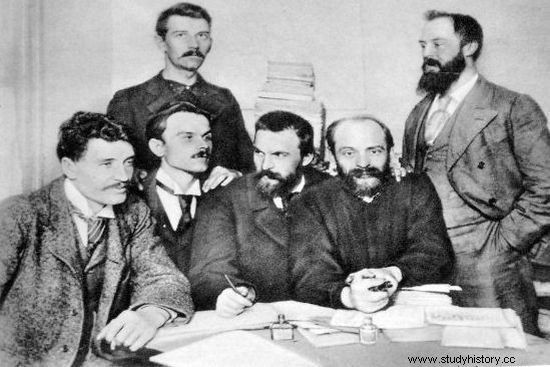The third president of pre-war Poland seems to be a serious, even pompous figure, embodying all the majesty of the Republic ... However, before Mościcki became a noble leader, he had a truly remarkable youth. And his wife had quite a run with him!
It all started with a bomb. Yes, my dear, at the age of 24 Ignacy Mościcki decided to construct a bomb . And not just any, because it was destined to kill the general-governor of Warsaw, Josif Hurko himself:one of the highest-ranking Russian officials in the Vistula River Region.
Who was this self-made explosives builder? A boy from a good family, a playboy, and above all, an incorrigible idealist. He spent the last four years in Riga studying chemistry, and at the same time became involved in the activities of the subversive workers' organization known as the Second Proletariat.
The same proletariat was destroyed by the tsarist police in the early 1890s, and most of its members were imprisoned. It was Ignacy Mościcki who remained at large and, together with two friends, decided to take revenge on the partitioner.

It was in this church on Długa Street in Warsaw that Ignacy Mościcki intended to blow himself up ...
He hastily married his own cousin Michalina, then left for France and England to look for a good recipe for the bomb. Finally he came back, with the correct recipe in hand, and took his somewhat confused and much younger wife to Riga. There he rented a small apartment, in which, together with Michalina, he designed and assembled bombs.
However, Tsarist Ochrana was on their heels - each day closer to breaking the whole plot. In such a situation, Mościcki, instead of simply abandoning his preparations and fleeing abroad, decided to become ... a suicide bomber. In my book entitled "The First Ladies of the Second Polish Republic" I quoted his memories:
We decided to invade the interior of the council in officer uniforms on the gala day, where the highest members of our henchmen were gathering, and to greet them with a volley of bombs, dying with them!
For the next few days, Mościcki neither thought nor spoke of anything other than the attack. He checked bombs, carried out test explosions near Warsaw, wondered aloud what words he should shout out just before blowing himself up. He also made his wife quite dispassionately that she would be a widow in a few days.
It was only after many years that he admitted: My mental state could no longer be considered normal . Anyway, in the following years he was also tormented by depressive thoughts, which does not bear witness to the mind of one of the future leaders of independent Poland.

"Happy" Mościcki family, several years after the events described in the article.
Fortunately, this one time the tsarist police fulfilled its duties perfectly:
The conspiracy has been discovered and all participants have come under close scrutiny by the authorities. Tsarist agents watched every step of Mościcki. Mościcka, too.
In short, an attempt was made impossible, unless the target was the first spike on the shore and not the highest-ranking Russian dignitary in the city. The conspirators themselves also felt that they found themselves in a trap ("First ladies of the Second Republic", p. 127) .
It was necessary to run away immediately. After many vicissitudes, which in themselves deserve a separate article, the Mościcki managed to sneak out of Warsaw and via Berlin to the Netherlands, and then to London. There, in a safe and democratic country, they intended to start a new life.
However, it soon turned out that the young chemist and idealist was completely unsuitable for normal life !! In a world where it was not about bombs and manifestos, he managed like a child in the fog. He was unable to find any permanent job, though he had the strangest jobs.
He studied wood carving for a while, but his work was too slow and inaccurate. He got a job in a barber shop, but his trembling hands made the beard totally unsuitable for shaving.
He also tried to start his own business - imported Caucasian kefir mushrooms and started making kefir from them . He himself assured that the production turned out to be excellent but it did not translate into financial success. It never occurred to Mościcki that the English never drank kefir and that one stranger from Poland would not convince them to take something like that in their mouths. he closed his business, but he had an eye on another one. He decided to become a carpenter. And then a typesetter.
Who supported the future president of the Republic of Poland all this time? His mother to whom he constantly sent letters asking for financial support . Mościcki's wife, Michalina, who tutored Polish immigrants also earned money for the family.

In London, Mościcki was poverty-stricken, but he did not stop dealing with politics, joining the PPS activities. In the photo from 1896 with a group of socialists. Mościcki first from the left, Józef Piłsudski in the center.
At the same time, she raised a group of children, struggled with poverty and ... with clenched teeth she endured the moods of her loser husband. Because instead of getting to work honestly, he whined: My stay in London brought me almost no spiritual satisfaction. The longing for the country (...) began to have a distinctly depressing effect on my mental state .
Even when Michalina fell ill with a serious lung disease and their son died for the same reason, Mościcki ... he only thought about his mental discomfort.
It was only after a few years of such a life that Mościcki was lucky and the future president got a job at the university. On the other hand, the rather compromising history of his youth in the Second Polish Republic was carefully falsified. So that no one could say a bad word about the head of state.
Source:
Trivia is the essence of our website. Short materials devoted to interesting anecdotes, surprising details from the past, strange news from the old press. Reading that will take you no more than 3 minutes, based on single sources. This particular material is based on:
- Kamil Janicki, First Ladies of the Second Polish Republic , Znak Publishing House, 2012.
